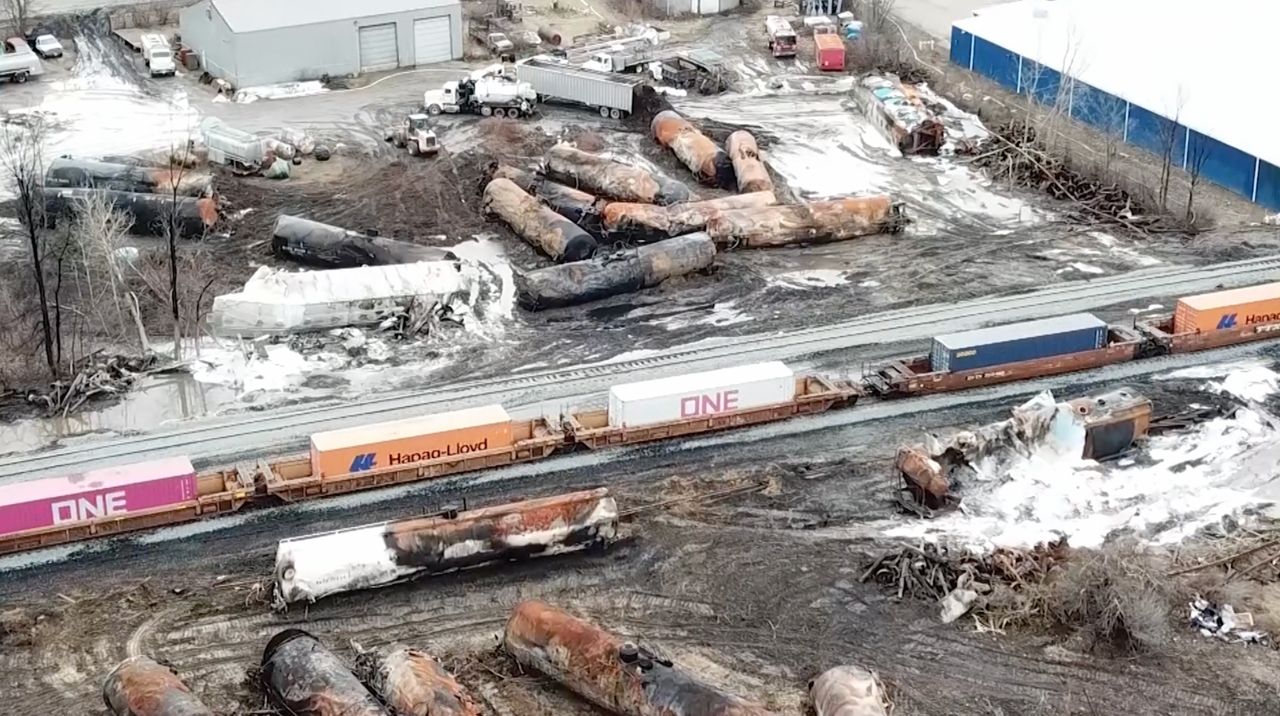OMAHA, Neb. (AP) — The fire that erupted after last month’s train derailment in Ohio melted a key part of the tank cars filled with toxic chemicals, so federal officials warned railcar owners Thursday to check their fleets for similar flaws.
The National Transportation Safety Board said Thursday that investigators determined the aluminum covers over the pressure relief valves on three of the five tank cars carrying vinyl chloride melted and that some of the metal was found around the valves.
The NTSB said melted aluminum may have degraded the performance of the valves and kept them from releasing some of the flammable gas to relieve pressure inside the tank cars. Norfolk Southern CEO Alan Shaw has said the failure of the valves was part of why officials decided to breach the cars and burn off the vinyl chloride. The resulting toxic fire prompted the evacuation of half the town of East Palestine, Ohio, and the surrounding area near the Pennsylvania border.
Shaw said the railroad agreed with all the officials responding to the Feb. 3 derailment that venting the hazardous materials cars was the best way to prevent a disastrous explosion.
“The factors on the ground at that time were that the safety valves on the rail cars had failed and the temperatures inside the railcars were heating up,” Shaw said. “So, our independent expert was extremely concerned about a catastrophic uncontrolled explosion that would shoot shrapnel and hazardous gas throughout this populated community.”
The Pipeline and Hazardous Materials Safety Administration sent an urgent safety warning out to tank car owners Thursday saying they should check how many of their cars have aluminum covers over the valves like the ones that melted after the Ohio derailment. The agency said car owners should consider switching to steel covers, which is now the industry standard on new tank cars because steel is less likely to melt.
It’s not clear how many tank cars in use might have aluminum valve covers. The cars with them involved in the derailment were all manufactured in the 1990s.
The derailment prompted many lingering concerns for the roughly 5,000 residents of East Palestine, even though state and federal officials say their tests haven’t found any harmful levels of toxic chemicals in the air or water around the derailment. Residents will have another chance to ask questions about the derailment at a town hall meeting with officials and the railroad Thursday evening.
The NTSB has said that an overheating bearing likely caused the train to derail, sending 38 cars, including 11 containing hazardous materials, off the tracks. A trackside sensor detected the overheating bearing just before the derailment, but the crew didn’t have enough time to stop the train.
Ohio Gov. Mike DeWine has said he is focused making sure Norfolk Southern cleans up the mess while helping the town recover, and Shaw agreed to testify in Congress next week at a hearing about the derailment.
“We continue to hold Norfolk Southern accountable. Their railroad, their train, their responsibility,” DeWine said Wednesday. “We intend to continue to focus on the safety of the people of East Palestine every single day and we will continue that every single day.”
Already, members of Congress and the Biden administration have proposed many rail safety reforms, but Norfolk Southern and the other major freight railroads want to wait until after the NTSB completes its investigation a year or more from now to make any significant changes.
The Federal Railroad Administration said Wednesday that it plans to step up its inspections of the routes that carry the most hazardous materials. The agency has urged railroads to review the way they use and maintain the network of sensors along the tracks that are designed to catch problems like overheating bearings before a derailment.



